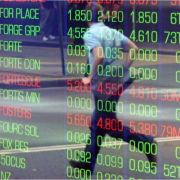The trend really is your friend
| Summary: Studies suggest momentum trading can offer better returns than growth or value investing, albeit with greater volatility. |
| Key take-out: A keen eye for trend can provide better returns than other styles, studies show. |
| Key beneficiaries: General investors. Category: Portfolio construction. |
There is much empirical research proving the superiority of slow trend-trading over a set and forget approach to a share portfolio. The April edition of the journal of the American Association of Individual Investors says a recent study found that trend/momentum-trading also beat the two main active forms of share investing known as “growth” and “value” approaches.
Professor Robert Novy-Marx (Simon Graduate School of Business at the University of Rochester) constructed “momentum”, “growth” and “value” style share portfolios mid-year for each of the last 50 years. He was interested in comparing the long-term performance of each style.
Note that in Australia almost all active fund managers (as opposed to passive indexed ETFs) use either a “growth” or “value” style of investing. Only MAN and Winton offer “trend/momentum”-driven funds, but these are hedge funds focused on overseas currency, commodity and precious metal futures markets rather than equities.
For each investment style, Professor Novy-Marx chose a portfolio of 150 shares from the S&P 500 index that ranked the highest on the best metric for that investment style. For instance for a “growth” style of investing, the 150 shares with the highest gross profit-to-asset ratio proved to be the best performing stocks whereas for “value” investing, the 150 shares with the lowest price-to-book value proved the best performers. For “trend/momentum”-style investing he chose simply the 150 shares with the strongest price gain in the preceding year.
The style portfolios were rebalanced at the end of June for each of the fifty years to 2012.
Below are the cumulative results for the period 1963-2012. Note how the “trend/momentum”-style beat the two other styles on average monthly return. Not surprisingly, it did worse on volatility because it was timed only once a year on the same date (mid-year). Nevertheless, in terms of risk-adjusted return it still came out in front.

Source: John Bajkowski, Combining Quality Growth with Value and Momentum, AAII Journal, April 2013
Trend-trading also finds favour with Mebane Faber of Cambria Investment Management. He found that between 1900 and 2011 using a simple strategy of buying an indexed equity fund when its monthly average price moved above its ten-monthly average price and selling it when the reverse happened produced superior returns with less downside volatility than simply holding the indexed fund. See next chart.
But a third study is what really caught my eye as a market timer. It combines the power of “trend/momentum” with the well-known fact that most investment success over any given period doesn’t come from picking the right stocks, but holding the right asset classes. A famous 1986 research paper by Gary Brinson, Randolph Hood and Gilbert Beebower, Determinants of Portfolio Performance, reported that more than 90 per cent of the variation in the returns of 91 US pension funds over time was attributable to their asset allocation.
Take an Australian example. Over the last year, winning asset classes for Australian ETF investors were US shares (blue), the US dollar (brown), Australian finance shares (green) and Asian shares (red). Notice also that only US share and US dollar funds had both an upward trend and momentum over this period.

The study that caught my attention found that having a menu of uncorrelated asset classes (e.g. two equity sector funds, an inverse equity fund, an emerging markets equity fund, a bond fund, a commodity fund and an inverse currency fund) and regularly switching to the two funds that exhibited the strongest trend and momentum resulted in average annual returns (before dividends and tax, but after brokerage) of 13.9% versus 2.6% for the S&P 500 index over the period 1998 to 2012.
The downside volatility of this ETF rotation strategy was less than half that of holding a passive fund mirroring the S&P 500 index. And surprisingly, the strategy involved only an average of three ETF switches (3 buys and 3 sells) a year because once a fund streaked ahead on trend and momentum it normally held that lead for an extended period.
We back-tested this strategy for Australia using eight asset class ETFs listed on the ASX (representing US shares, Asian shares, Australian finance and resource sectors, inverse Australian equity, Australian bonds, gold and US dollars as shown in the two charts above) over the 2012/13 financial year and got an amazing result too. The ETF Rotation strategy delivered a 29.0% return versus 14.4% for the All Ords index. It was not possible to back-test it further than one year because several Australian-listed ETFs only came into existence recently.
Our ETF Rotation strategy can best be described as a race between different asset classes where you always back the two ETFs doing best. In the rare event that all ETFs flag, you simply switch to cash. It is the closest thing to an all-weather portfolio, though it’s not without risks. Since it’s based on medium to long term trends and momentum it is not as responsive to short term market corrections as actively trend-trading a single ETF.
Percy Allan is a director of MarketTiming.com.au For a free three week trial of its newsletter and trend-trading strategies for listed ETF funds, see www.markettiming.com.au.

















